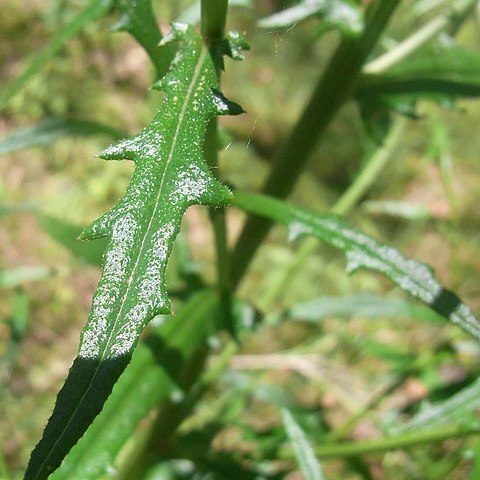Erect annual to short-lived perennial herb. Mid cauline lvs hispid with short hairs on upper surface and longer, denser, jointed hairs on lower, rarely only sparsely hispid, apetiolate, narrow, ovate, lanceolate, oblong or elliptic, pinnately lobed to 1-pinnatifid with lanceolate to oblong, entire to few-toothed segments, usually amplexicaul and deeply 2-3-fid at base, 5-10-(14) × 1-3-(4) cm. Uppermost lvs smaller, usually lanceolate, and often dentate and not lobed. Supplementary bracts 4-7, 1-2 mm long. Involucral bracts (8)-10-13-(14), glabrous, 5-6 mm long. Ray florets 0. Disc yellow, 1-2 mm diam. Achenes ellipsoid-subcylindric, slightly constricted below apex, with (1)-2-3-(4) rows of hairs in grooves between broad ribs, 1.5-1.8 mm long.

